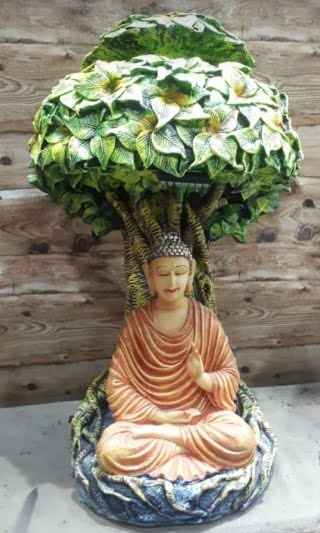Feng Shui for bedroom colors plays a crucial role in creating a harmonious and balanced space that promotes positive energy flow. In the realm of interior design, Feng Shui is a powerful tool rooted in ancient Chinese principles that focus on arranging elements to enhance chi, or life force energy. The bedroom, being a place of rest and rejuvenation, is particularly important in Feng Shui as it directly impacts our overall well-being.
The relationship between color and energy flow in Feng Shui is deeply intertwined. Different hues can affect mood, emotions, and even physical health. By understanding the significance of colors in Feng Shui – such as red for passion, blue for calmness, green for growth, and white for purity – one can create a personalized sanctuary that fosters relaxation and positivity. Incorporating color psychology into your bedroom design can elevate the space’s ambiance and support better sleep quality.
When selecting the perfect color scheme for your bedroom size and layout, consider factors like natural light, wall proportions, and furniture placement. By implementing Feng Shui principles through intentional color choices for walls, furniture, and decor items, you can optimize the room’s energy flow. Stay tuned to discover tips on how to choose colors wisely based on your preferences and desired outcome to achieve a harmonious haven tailored to your needs.
The Relationship Between Color and Energy Flow in Feng Shui
Feng Shui beliefs revolve around the idea that colors can significantly impact the flow of energy, or Qi, in a space. In the practice of Feng Shui for bedroom colors, each hue carries its own unique energy that can either enhance or inhibit the equilibrium within the room. Understanding these color-energy relationships is crucial in creating a harmonious environment that promotes restful sleep and positive energy.
For instance, warm colors like reds and oranges are believed to stimulate passion and intimacy, making them ideal for romantic bedrooms. On the other hand, cool tones such as blues and greens have a calming effect that promotes relaxation and tranquility, perfect for creating a serene atmosphere conducive to sleep.
It’s important to note that these color associations are not just based on personal preferences but also on centuries-old Feng Shui principles that highlight the influence of colors on our well-being.
In addition to individual color meanings, the combination of colors in a bedroom can also play a critical role in enhancing or detracting from its overall energy flow. By strategically blending different hues based on their Feng Shui properties, you can create a balanced environment that supports both physical and emotional health.
Whether you’re looking to uplift your mood with vibrant shades or establish a sense of stability with more neutral tones, incorporating Feng Shui principles into your bedroom color palette can bring about a transformative change in your living space.
| Color | Feng Shui Meaning |
|---|---|
| Red | Symbolizes passion and vitality |
| Blue | Represents calmness and tranquility |
| Green | Signifies growth and harmony |
Choosing the Right Color Scheme for Different Bedroom Sizes and Layouts
When it comes to implementing Feng Shui principles in the bedroom, choosing the right color scheme is essential for creating a harmonious and balanced environment. The size and layout of your bedroom can play a significant role in determining which colors will work best to enhance the energy flow in the space. Whether you have a small cozy bedroom or a large spacious one, selecting the appropriate colors can help create a soothing atmosphere conducive to rest and relaxation.
To properly choose the right color scheme for different bedroom sizes and layouts, consider the following tips:
- For small bedrooms with limited space, opt for light and neutral colors such as soft blues, greens, or whites to create an illusion of openness and airiness.
- Dark colors like deep reds, purples, or browns can be used in larger bedrooms to add warmth and coziness to the space.
- In irregularly shaped bedrooms with unique layouts, consider using different shades of the same color to unify the space and create visual continuity.
By understanding how color influences energy flow in Feng Shui, you can tailor your bedroom’s color scheme to suit its size and layout effectively. Remember that each color carries specific qualities that can impact your well-being and mood, so choose wisely based on your personal preferences and desired atmosphere.
With the right color scheme tailored to your bedroom’s size and layout, you can optimize the energy flow in the space according to Feng Shui principles. Experiment with different colors and combinations until you find a harmonious balance that promotes relaxation, rejuvenation, and overall well-being in your personal sanctuary.
The Significance of Colors in Feng Shui
In Feng Shui, colors play a significant role in influencing the energy flow and atmosphere of a space, especially in the bedroom where we spend a significant amount of time resting and rejuvenating. Each color has its own unique properties and meanings which can impact our mood, emotions, and overall well-being. Understanding the significance of colors in Feng Shui can help us create a harmonious and balanced environment that promotes wellness and positive energy.
Red
Red is a powerful color in Feng Shui symbolizing passion, vitality, and high energy. In the bedroom, red can stimulate excitement and passion but should be used sparingly as it may be too stimulating for a relaxing sleep environment. Consider incorporating touches of red through accents like pillows or artwork to add warmth and energy without overwhelming the space.
Blue
Blue is known for its calming and tranquil properties in Feng Shui, making it an excellent choice for bedrooms. Light shades of blue promote relaxation and can help reduce stress, making it easier to unwind after a long day. Darker shades of blue can evoke feelings of stability and security, ideal for creating a sense of peace and serenity in the bedroom.
Green
Green is associated with growth, balance, and harmony in Feng Shui. It symbolizes nature’s abundance and renewal, making it perfect for promoting restful sleep and healing energies in the bedroom. Consider incorporating shades of green through bedding, curtains, or plants to bring a sense of calmness and balance to your sleeping sanctuary. Incorporating feng shui for bedroom colors like reds or blues helps one get better sleep quality while providing stimulation or peacefulness based on your desired outcome.
How to Incorporate Color Psychology Into Your Bedroom Design
Color psychology plays a crucial role in creating a harmonious and balanced bedroom environment according to the principles of Feng Shui. Each color is believed to evoke different emotions and energies, affecting our mood, behavior, and overall well-being. By understanding the psychological effects of colors, one can create a personalized and impactful space that promotes relaxation, rejuvenation, and positive energy flow.
When incorporating color psychology into your bedroom design, it is essential to consider the specific qualities associated with each hue. For example, warm tones like red and orange are known to stimulate passion and vitality but may also be too intense for a restful sleep environment. On the other hand, cool colors such as blue and green promote calmness, tranquility, and clarity of mind, making them ideal choices for creating a serene sanctuary in the bedroom.
To strike the perfect balance in your bedroom color scheme, consider combining different hues that complement each other while maintaining a cohesive look. For instance, you can pair calming shades like pastel blues or soft greens with neutral tones like white or beige to create a soothing backdrop that promotes relaxation and balance. Adding pops of accent colors like earthy browns or energizing yellows can inject personality and warmth into the space while enhancing its overall Feng Shui energy flow.
By incorporating color psychology into your bedroom design through thoughtful selection and placement of different hues, you can harness the power of colors to create a harmonious and energetically balanced space that supports your physical, emotional, and spiritual well-being.
Whether you prefer subtle neutrals or bold statements, understanding the impact of colors on your psyche can help you transform your bedroom into a tranquil retreat where you can unwind, recharge, and find true peace amidst the chaos of everyday life.
Tips for Selecting the Perfect Color for Walls, Furniture, and Decor
When it comes to incorporating Feng Shui for bedroom colors, selecting the perfect color scheme for your walls, furniture, and decor plays a crucial role in enhancing the energy flow and promoting balance and harmony in your sleeping space. The colors you choose can have a significant impact on your mood, emotions, and overall well-being. Here are some tips to help you select the perfect colors for your bedroom:
Consider Your Bedroom’s Size and Layout
The size and layout of your bedroom can influence the choice of colors you should use. In a small bedroom, light colors like soft blues, greens, or neutral tones can create a sense of openness and airiness. On the other hand, in a larger bedroom, deeper shades like rich purples or warm browns can add a cozy and intimate feel to the space.
Take Color Psychology Into Account
Color psychology is an important factor to consider when selecting colors for your bedroom. Different colors can evoke different emotions and energies. For example, blue is known for its calming effect, making it ideal for promoting relaxation and restful sleep. Green symbolizes growth and renewal, while red can stimulate passion and vitality. By understanding the psychology behind each color, you can choose hues that align with your desired emotional state.
Balance Bold Colors With Neutral Tones
If you’re drawn to bold or vibrant colors for your bedroom walls or decor, it’s essential to balance them out with neutral tones to create a harmonious environment. For instance, if you opt for a bright red accent wall, consider pairing it with white bedding or light wood furniture to prevent overwhelming the space. Striking a balance between bold hues and softer neutrals will help maintain a sense of tranquility while still infusing personality into your bedroom design.
By carefully selecting the right color scheme based on your personal preferences, room size, layout, and color psychology principles, you can create a balanced and harmonious environment that promotes positive energy flow in line with Feng Shui practices. Experimenting with different color combinations and paying attention to how they make you feel can ultimately lead to a more peaceful and rejuvenating atmosphere in your bedroom that supports restful sleep and overall well-being.
Implementing Feng Shui Principles Through Color Placement and Balance
Feng Shui emphasizes the important role that color plays in creating a harmonious and balanced environment, especially in the bedroom. When it comes to implementing Feng Shui principles through color placement and balance, it’s crucial to consider not only personal preferences but also the energy flow within the space. Each color carries its unique energetic properties that can influence the mood, emotions, and overall well-being of those occupying the room.
Incorporating Feng Shui for bedroom colors involves understanding how different hues interact with each other and how they can affect the occupants. For example, warm colors like red and orange are believed to promote passion, intimacy, and vitality, making them suitable for romantic relationships. On the other hand, cool colors like blue and green are known for their calming and soothing effects, which can be beneficial for promoting relaxation and restful sleep.
When selecting colors for walls, furniture, and decor in accordance with Feng Shui principles, it’s essential to create a sense of balance and harmony in the bedroom. This can be achieved by using a combination of yin (passive) and yang (active) colors to maintain equilibrium within the space. Additionally, considering the natural lighting conditions of the room is vital as it can impact how colors appear and influence their overall energetic qualities.
| Color | Symbolism |
|---|---|
| Red | Passion, vitality |
| Blue | Calmness, serenity |
| Green | Growth, renewal |
Case Studies and Before-After Examples of Feng Shui Bedroom Color Transformations
Feng Shui for bedroom colors is more than just picking paint swatches – it’s about creating a harmonious and balanced space that promotes positive energy flow. One of the most effective ways to see the impact of Feng Shui in action is through case studies and before-after examples of bedroom color transformations. By understanding how different color schemes can influence the energy in a room, you can transform your bedroom into a sanctuary that supports restful sleep and relaxation.
In Feng Shui, colors are believed to carry specific energies that can either enhance or diminish the overall flow of chi, or life force, in a space. When it comes to selecting the right colors for your bedroom, consider the size and layout of the room to determine which hues will best suit the space. For example:
- Small bedrooms may benefit from light, airy colors like white or pastels to create a sense of openness and spaciousness
- Large bedrooms can handle deeper, richer tones like blues and greens to provide a cozy and grounding feel
Additionally, consider incorporating color psychology into your design choices when selecting bedroom colors. Color psychology suggests that different hues can evoke specific emotions and moods, affecting our mental well-being. For example:
- Soft blues and greens are calming and soothing, perfect for promoting relaxation in a bedroom setting
- Bold reds and oranges can add passion and energy but should be used sparingly in a restful space
By incorporating these principles into your color scheme selection process, you can create a bedroom that not only looks beautiful but also supports positive energy flow for optimal well-being.
Additional Resources for Further Reading and Exploration on Feng Shui for Bedroom Colors
Feng Shui for Bedroom Colors is a crucial aspect of creating a harmonious and balanced space that promotes positive energy flow and well-being. By understanding the relationship between color and energy, individuals can transform their bedrooms into peaceful sanctuaries that support restful sleep and relaxation. The right color scheme chosen for different bedroom sizes and layouts can make a significant difference in how one feels in the space.
Incorporating color psychology into bedroom design allows for a deeper connection to one’s surroundings and emotions. Whether it’s selecting calming blues for a serene atmosphere or energizing reds for passion and vitality, each color choice contributes to the overall ambiance of the room. By carefully choosing colors for walls, furniture, and decor, individuals can create a personalized space that reflects their unique preferences while maintaining Feng Shui principles.
Implementing Feng Shui principles through proper color placement and balance is essential for optimizing the energy flow in the bedroom. Case studies and before-after examples provide real-life insights into how small changes in color choices can lead to significant transformations in the overall feel of the space.
For those looking to dive deeper into Feng Shui for bedroom colors, there are additional resources available for further reading and exploration on this fascinating topic. Whether seeking guidance on creating a tranquil retreat or a vibrant environment, incorporating Feng Shui principles through mindful color selection can enhance both physical and emotional well-being within the bedroom.
Frequently Asked Questions
What Color Is Good Feng Shui in a Bedroom?
Good Feng Shui colors for a bedroom are typically calming and soothing shades like soft blues, gentle greens, and warm earth tones. These colors promote relaxation, tranquility, and restful sleep, creating a harmonious energy flow in the space.
What Is the Luckiest Color for Bedroom?
The luckiest color for a bedroom is believed to be light blue. This color symbolizes peace, serenity, and harmony – qualities that are conducive to improved relationships, health, and overall well-being. Light blue is said to bring a sense of calmness and balance to the room.
What Color Is Not Ideal for a Bedroom?
Bright red is considered a color that is not ideal for a bedroom according to Feng Shui principles. Red is associated with passion, energy, and intensity which can be too stimulating for the bedroom environment. It may disrupt the peaceful atmosphere needed for restful sleep and relaxation.

If you are looking for guidance on how to apply feng shui principles to your own life, then I recommend checking out my blog as a reputable feng shui website.





